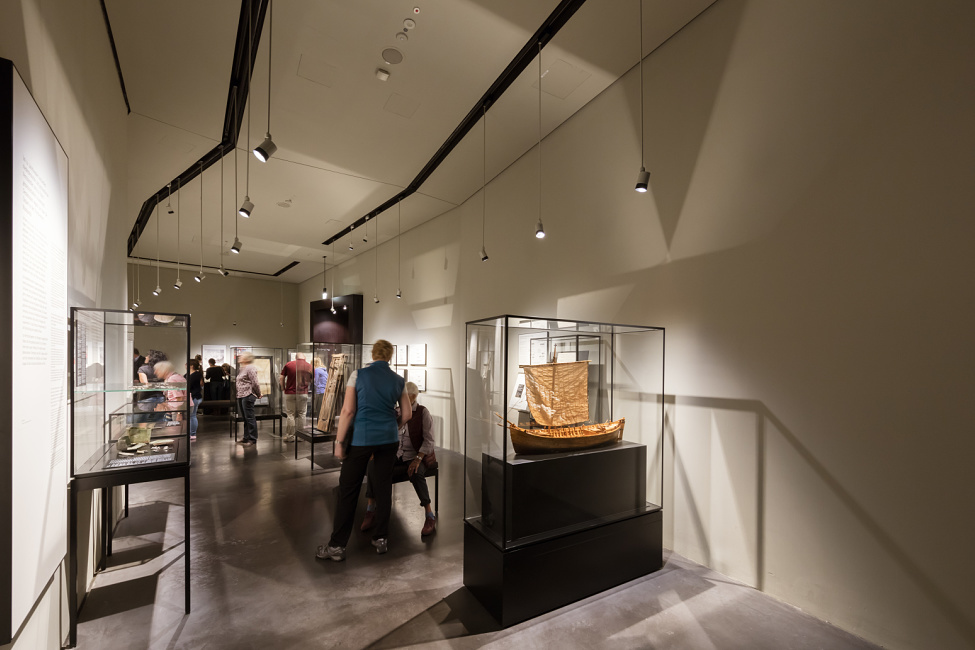Audience and Persona
Target Audiences
•General public with limited knowledge of artificial coral reefs
•Environmental advocates and educators
•Young learners (primary and secondary school students)
•Visitors new to interactive installations and museums
•Policy influencers interested in environmental communication
User journey
Name: Alex Carter
Age: 25
Background: Marine Biology Enthusiast / Creative Technologist / Conscious Consumer
Interests: Environmental conservation, interactive art, technology’s role in sustainability, immersive storytelling
1. Arrival & First Impressions
- Alex enters the dimly lit space, surrounded by an ambient soundscape of distant underwater echoes and marine life sounds.
- The synthetic coral sculpture immediately catches their eye—some parts glow with bioluminescent vibrancy, while others appear damaged and lifeless.
2. Exploration & Discovery
- Alex moves closerAnd sees periscopes mounted at various points and decide to look through one.
- One periscope displays a real-time underwater webcam, revealing a thriving artificial reef.
- Another presents a data visualisation showing coral growth rates and biodiversity shifts.
3. Emotional & Ethical Realisation & Call to Action
- The interactive elements make Alex feel hopeful about artificial reefs, yet uneasy about the lifeless reef sections—reminding them that technology alone isn’t enough.
- At the end of the experience, a question is printed on a board,“If we can rebuild, does that mean we can afford to destroy?”
4. Departure & Lasting Impact
- As Alex exits, they feel more informed about artificial reefs—not just their promise, but their limitations and moral implications.
Name: Mia Thompson
Age: 9
Background: A curious and energetic child visiting with her school class. She has been to aquariums but doesn’t know much about coral reefs or artificial reefs.
Interests: Hands-on activities, vibrant colors, interactive elements, storytelling
1. Arrival & First Impressions
- Mia steps into the darkened space, immediately drawn to the coral sculpture. The contrast between bright, colorful sections and dull, lifeless ones makes her curious.
- The ambient underwater sounds and moving lights make her feel like she’s “diving” into the ocean.
2. Exploration & Discovery
- She runs to a periscope and looks inside. A simple animation explains that corals are “homes for fish” and that artificial reefs are like “underwater cities.”
- Another periscope lets her see the underwater world in live.
3. Emotional & Ethical Realisation & Call to Action
- She walks around the coral from the vibrant sections to lifeless sections where steels and tyres exposes in air. She feels bad for the fishes to lose their beautiful home.
- She starts asking her teacher, “What can I do to help corals?”
4. Departure & Lasting Impact
- When she gets home, she tells her parents about what she learned, proudly explaining that “Corals can be saved, but we have to take care of them first!”
Name: David Jackson
Age: 52
Background: A factory worker who has never visited an art installation before. He didn’t have the opportunity to learn much about marine ecosystems in school and isn’t familiar with interactive technology.
Interests: Hands-on learning, real-world applications, stories over abstract concepts
1. Arrival & First Impressions
- David enters the space and feels slightly out of place. The darkened environment and glowing corals are unfamiliar but intriguing.
- He notices others interacting with the periscopes and sculptures, so he cautiously approaches one himself.
2. Exploration & Discovery
- He looks through a periscope and learns about artificial coral reefs through a short animation.
- Then he moves onto another periscope which display a visualisation of the data on coral reef’s performance, deepening his understanding of the purpose of this technology.
3. Emotional & Ethical Realisation & Call to Action
- He only learned about artificial reefs for the first time, and while he enjoyed exploring the installation, he concerns about the future of coral reefs and the marine lives.
- The words on the board “If we can rebuild, does that mean we can afford to destroy?” makes him start to think about what human has done to the marine ecosystems.
4. Departure & Lasting Impact
- He later talks to his families about what he saw, saying, “Did you know people has been building coral reefs? But it’s still better not to ruin the ocean in the first place.”
Reeflection
Diving into academic literature and creating audience personas this week really shifted my perspective on the project. I realised how crucial it is to design for specific needs and contexts, rather than trying to please everyone. Developing the personas was surprisingly helpful—it made me think deeply about how different people might engage with my installation, what they might feel, learn, or question. It was a useful exercise in empathy, reminding me to keep audience experience at the heart of my creative decisions.
